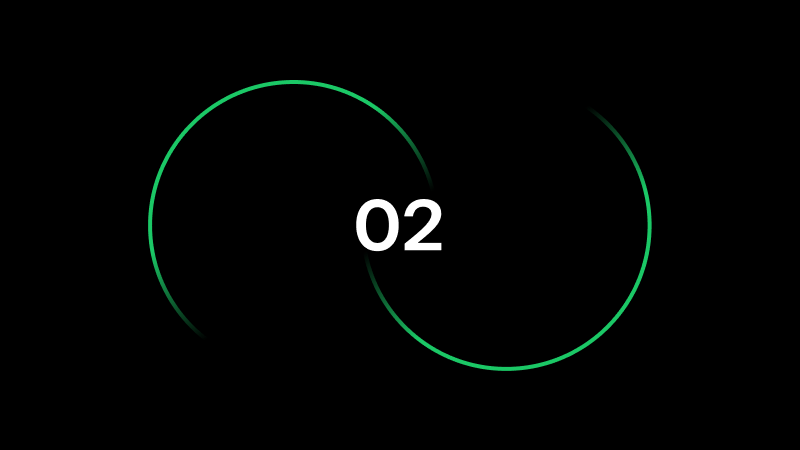05
Shaping healthcare
Bridging proactive and reactive care
The health app landscape is evolving, with fitness apps thriving in the Netherlands while medical apps lead in Sweden and Denmark. Yet, proactive apps must become smarter and reach a wider audience to drive true impact. By embedding prevention into medical apps, we can move beyond reactive care—making proactive well-being a natural part of digital health management. AI, wearables, and sensors will be key enablers in this shift, bridging the gap between proactive and reactive care.
5.1
Healthcare is undergoing a significant transformation
With just a smartphone, individuals can track their health, access telemedicine services, and receive early alerts about potential risks. This transformation is more than just convenience—it represents a fundamental shift in how healthcare is delivered and experienced.
The growing adoption of health-related apps underscores this evolution. Across all categories in the three countries, medical apps get a very high App Pulse score. In Sweden and Denmark, medical apps rank among the top three most-used categories. Fitness and health apps also see strong engagement. In the Netherlands, Fitness and health apps hold a solid third place, highlighting a growing interest in digital health solutions across different healthcare systems.
The graph shows all apps consolidated into our global set of categories. In the original Danish classification, Medical falls under the Public sector. To gain a clearer view of their performance, we refined and reorganized the category structure slightly. This is the result.
App Pulse score by category across all countries
Provided by framna
Provided by framna
These trends are shaped by each country’s healthcare structure. Sweden and Denmark rely on tax-funded, predominantly public healthcare models, where digital health solutions compliment existing services. The Netherlands, operating on a private insurance-based system, has driven the expansion of insurance-linked telehealth and proactive care. Despite these structural differences, all three nations emphasize strong primary care, with general practitioners (GPs) acting as key access points to specialized services.
As digital health continues to evolve, the intersection of technology and healthcare presents new opportunities for innovation—empowering individuals to take greater control of their well-being in ways never before possible.
5.2
Health apps: From step counters to life-savers
Early healthcare apps, like Withings and Runkeeper, were simple yet effective, helping users track steps, calories, and weight with ease. Their success laid the foundation for today’s advanced health-tech landscape.
Now, apps integrate with smart devices to monitor heart rates, sleep, and nutrition. Platforms like Apple Health and Google Fit centralize data, shifting the focus from reactive care to proactive health management. With seamless data sharing across wearables and providers, healthcare apps are evolving into essential tools for personalized, connected care.
5.3
Proactive apps empower user control
Fitness & health apps satisfaction
Provided by framna
Provided by framna
Proactive care is all about prevention and wellness. Healthcare apps today make it easier than ever to track vital signs, form healthy habits, and stay accountable. For instance, apps like Lifesum provide personalized meal plans and calorie counters to help users make better food choices.
Success story
Lifesum empowers users by making healthy eating effortless. The app has an App Pulse score of 79, driven by standout features. It’s easy to use, offers innovative smart features, and simplifies daily life. Lifesum provides personalized meal plans, detailed nutritional information, and habit trackers to support users' health goals. Users can log meals by snapping photos, using voice input, typing, or scanning barcodes—making nutrition tracking intuitive and flexible. By combining smart technology with user-friendly design, Lifesum transforms the journey toward healthier living—helping millions make smarter food choices every day.

Natural Cycles goes further, providing a certified contraceptive method based on body temperature tracking. Fitness apps like Strava take motivation to the next level by incorporating social elements. Strava’s community-driven design, where users share achievements and compete with friends shows how technology can encourage regular use and friendly competition. This helps users stay accountable to their health goals. The social aspect often enhances user experience, turning personal fitness into a shared journey. The satisfaction levels of users for fitness apps are largely shaped by the apps’ usability, communication efficiency, trustworthiness, and technical reliability. Simplicity, intuitive design, and robust performance are critical to positive user experiences, while frustration arises when apps fail to meet expectations or present barriers to essential functions.
Mental health apps like Calm and Headspace are redefining proactive care by extending support beyond physical health to emotional well-being. In Denmark, Calm is favored for its relaxing content, while Headspace earns praise for its depth and daily usability.
Notably, these apps challenge the idea that mental health support must be in-person. Their popularity highlights how digital platforms can provide meaningful care, offering comfort exactly when and where users need it.
The struggle with daily engagement
Most users engage with health apps only occasionally—a trend seen across all markets. This is despite widespread awareness that staying active, eating well, and taking proactive action are key to long-term health. Even with technology designed to make healthy choices easier, building lasting habits remains a challenge.
The real question is: how can proactive health apps close the gap between awareness and sustained action?
User frequency fitness & health apps
Provided by framna
In Denmark, just 11% of users engage with fitness apps daily, while 48% report using them rarely. In contrast, the Netherlands leads in adoption—17% of users interact with fitness and health apps daily, with 27% engaging weekly.
Wearables collect data passively, minimizing the need for constant app use. Instead of driving engagement for its own sake, the real value lies in timely follow-ups, meaningful visuals, and smooth OS integration. By linking tracked data to broader health insights, apps can offer a holistic, proactive experience that helps users make informed decisions with less friction.
Our analysis highlights key opportunities to enhance user engagement, ensuring apps remain integral to daily health and wellness routines.
Global driver analysis fitness & health apps
Factors are ranked left to right by impact. High-impact essentials on the left, lower-impact factors on the right, highlighting gaps and opportunities.
Provided by framna
Provided by framna
These are the key drivers for building a successful fitness & health app, based on our app analysis:
Deliver engaging, actionable content with clear, personalized guidance.
Personalization matters. Users want recommendations tailored to their goals.
Prioritize features that simplify, inform, and drive real progress.
Use smart features. Automate tasks, deliver personalized insights, and align with user goals to drive engagement and build loyalty.
Prioritise intuitive design. Keep the interface clear and simple, enabling easy navigation—even during busy or stressful moments.
5.4
Medical apps: When help is a tap away
Satisfaction rate for medical apps
Provided by framna
Provided by framna
Our study shows that the vast majority of medical app users are satisfied or very satisfied with their experience—highlighting a unique opportunity. While fitness apps focus on prevention, medical apps provide a critical digital safety net during moments of urgency.
Success story
Knodd makes expert pediatric care effortless and accessible—from pregnancy through early childhood. Rated the top medical app with an App Pulse Score of 81, it’s trusted for its ease of use, seamless communication, and high-quality, reliable content.Through an intuitive app, parents can connect with experienced pediatric nurses and doctors via video for quick evaluations, clear diagnoses, and expert guidance. Whether for preventive care or urgent concerns, Knodd offers support anytime, anywhere—ensuring peace of mind when it matters most.

Platforms like Kry, Knodd, and Hej Doktor complement in-person doctor visits, making it easy to book virtual consultations, receive prescriptions, and access test results from home. These apps go beyond convenience—they offer peace of mind. For many, this accessibility turns stressful situations into manageable ones.
“Quick help without needing to travel when feeling sick.”
- User comment about Kry
To deepen our insights beyond the App Pulse score, we conducted a driver analysis to examine key operational factors influencing app performance. We identified how these drivers correlate with App Pulse scores, revealing the impact of specific strengths and weaknesses on an app’s overall rating.
Global driver analysis medical apps
Factors are ranked left to right by impact. High-impact essentials on the left, lower-impact factors on the right, highlighting gaps and opportunities.
Provided by framna
Provided by framna
Based on our analysis these are the key drivers for building a successful medical app (excluding pharmacies):
Valuable content
Users expect reliable, relevant, and well-structured information. Telehealth apps need clear guidance; mental health apps benefit from engaging, supportive content. Both must be trustworthy and user-focused.
Built on trust
Users value stability, data security, and professional design—key factors that build confidence and enable deeper engagement.
Effortless usability
Ensure simple navigation, clear instructions, and accessibility for all, regardless of tech skills.
Timely notifications
Send personalized, non-intrusive alerts that support user needs—like appointments, medication, or mindfulness.
5.5
Balancing security and usability in medical apps
As medical apps become more powerful, so do concerns about data privacy. Trust is essential in healthcare, and handling sensitive information requires careful precision. Striking the right balance is not always easy—users can become frustrated when security measures, like repeated logins with Electronic identification (eID), hinder convenience. The challenge is designing seamless experiences that prioritize both safety and usability.
Notifications play a vital role in keeping users engaged with their health, but they often contain personal details. To maintain trust, apps must ensure these messages are delivered discreetly, securely, and at the right moments.
5.6
AI, wearables, and the future of healthcare
The future of medical apps is filled with possibilities. AI is already transforming mental health, with platforms like Headspace using chatbots to support anxiety and depression. Soon, AI could power more complex diagnoses, offering cost-effective, scalable mental health solutions. Imagine therapy sessions that adapt to a user’s stress levels in real time or an app that connects you directly to a psychologist or telehealth provider when prolonged stress is detected.
Albert Heijn Leefstijlcoach, an app developed by a big grocery store chain in the Netherlands, already offers a glimpse into what is possible by suggesting meals based on grocery purchases. The next step? AI could integrate meal planning with exercise routines and health data, creating a seamless link between nutrition, fitness, and medical insights.
Smaller gyms and wellness studios can also tap into AI by embedding smart APIs into their apps, enabling personalized workout plans, real-time progress tracking, and even live posture correction during virtual sessions.
Wearables are advancing rapidly. The Apple Watch, for example, can detect illness days before symptoms appear by analyzing subtle shifts in vitals. As sensor technology becomes more accessible, early detection and intervention will expand—critical as aging populations put increasing pressure on healthcare systems.
Medical apps are also set to play a vital role in remote and home care. With fewer caregivers available, technology can bridge the gap—enabling individuals to track vitals, manage care plans, and maintain their health from home.
Bridging the gap between treatment and prevention
Installations by age medical apps
Provided by framna
Provided by framna
Installations by age fitness & health apps
Provided by framna
Provided by framna
While fitness apps promote healthier lifestyles, they struggle to engage older users. In contrast, medical apps see steady usage across all ages, presenting an opportunity to integrate proactive health features into platforms users already trust. Instead of pushing older adults toward fitness apps, medical apps could bridge the gap between treatment and prevention, offering a more holistic approach to health.
For this shift to succeed, solutions must be seamless. Passive tracking from wearables can provide actionable insights without extra effort, while AI can turn health data into early-warning signals, helping users and doctors address risks proactively. Insurers and healthcare providers also play a role. Incentivizing proactive features could drive adoption and engagement.
5.7
Conclusions & takeaways
Healthcare apps are evolving beyond convenience. The rise of digital health solutions signals a shift from reactive care to proactive well-being. AI, wearables, and smart sensors are bridging this gap, offering real-time insights and personalized health management.
Proactive health apps must engage users more effectively. Despite their potential, many users struggle with daily engagement. Personalization, social motivation, and effortless tracking via wearables are critical to driving long-term adoption and impact.
Medical apps serve as digital safety nets. Platforms like Kry and Hej Doktor complement traditional healthcare by offering instant access to consultations, prescriptions, and test results—providing reassurance when it matters most.
Balancing security and usability is essential. As users share more personal health data, privacy concerns will only grow. Medical app providers must take data protection seriously to maintain trust and avoid reputational risk. Right now, they’re doing well—privacy and security ranked as the second strongest driver in our study. Seamless authentication, discreet notifications, and transparent practices will remain critical in building long-term confidence in digital healthcare.
AI and wearables will redefine healthcare experiences. From early illness detection to AI-powered mental health support, the next generation of apps will integrate real-time data with predictive insights, making proactive health management more accessible.
The future lies in embedding prevention into trusted platforms. Fitness apps struggle with older demographics, but medical apps maintain steady adoption across age groups. Integrating proactive care within existing medical apps could make proactive health a natural part of digital healthcare.








